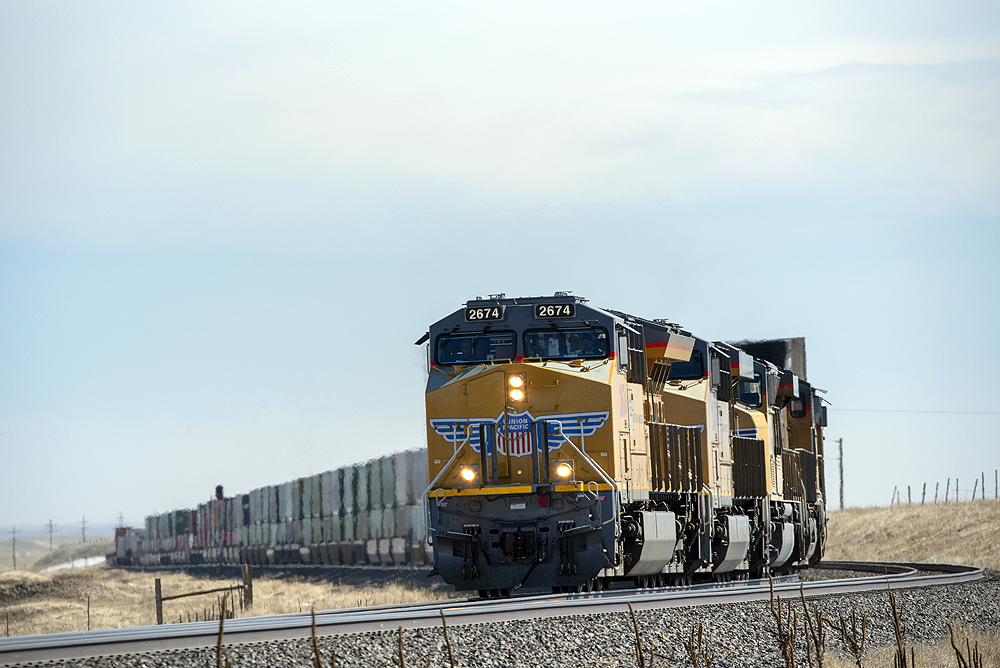
Sherman Hill is one of the landmarks on the transcontinental railroad. It was the first major obstacle for the railroad as it headed west. It’s the highest point on the first transcontinental railroad with the original summit topping out at 8,247 feet above sea level. A 1901 line change shaved over 200 feet off the summit, bringing it down to 8,015 feet. There were a few passes that crossed the mountains at a higher elevation, but the majority of passes in the West measured out at around 7,500 feet and down. There is no doubt Sherman Hill is a formidable obstacle, yet at the same time it is among of the easier rail crossings of the Rocky Mountains. Today, it’s one of the busiest main lines in North America.
Sherman Hill history
Gen. Grenville Dodge was scouting a route for the UP mainline in 1867 and, while running away from an indigenous patrol, he came upon a rise and discovered the future Sherman Hill route west from Cheyenne, Wyoming. While it was impossible to maintain the desired grade, this route was the best one, and was not considered excessive.
Native Americans did their best to oppose the railroad with ultimately unsuccessful guerilla warfare.
Construction of the UP continued westward from Cheyenne, and by the end of 1867, the end of track had reached Granite Canon, 19 miles from Cheyenne. Here, construction became more difficult. The highest and longest earthen fill was built during the winter months of 1867 and 1868. This work required manpower and mules, hand tools, wagons and carts, and blasting powder.
Tracklayers worked westward to Sherman station, at what was then the highest railroad station in the world at 8,247 feet. Dodge bestowed the name Sherman in honor of Civil War Gen. William Tecumseh Sherman.
Dale Creek ravine, about 3 miles beyond Sherman, was the second major obstacle on Sherman Hill. A huge trestle, 650 feet long and 126 feet high, was built during winter 1867-1868, using timbers from Chicago. Dale City was located at the bridge construction site and included a short-lived post office. As soon as track was installed on the bridge, workers pushed westward. A bridge at Dale Creek remained until 1901.
Sherman Hill grades (up to 1.92 percent), as originally constructed, required the use of helper locomotives on most all trains. But gravity was only one problem. Snow was a major issue in the early days, due to the narrow cuts made during the line’s hasty construction. At one time, 13 snow sheds lined the route between Archer (9 miles east of Cheyenne) and Laramie. The sheds became a hazard for trainmen riding the top of cars. Many sheds were destroyed when a hot cinder lodged in the dry timbers and fanned in the wind. Over time the cuts were widened, and the remaining sheds removed one by one prior to 1900.
Sherman Hill: In the Harriman era
Edward H. Harriman was among a number of investors who bought out the insolvent-Union Pacific’s mainline through a government auction in 1897. Harriman became the railroad’s leader and had a keen eye toward making it profitable.
Major changes shortened the distance between Omaha and Ogden, Utah, by more than 40 miles, doing away with excessive curvature and steep grades. Across the system, existing grades were raised to a higher standard, and hundreds of trestles were filled in. These improvements eliminated potential fire hazards and expensive maintenance.
One major project was between Cheyenne and Laramie. Survey crews determined a new route west of Buford to Laramie was possible by building a tunnel, passing Sherman and lowering the elevation by 247 feet. Grading required numerous high fills to cross deep ravines. West of Buford, Lone Tree fill was 130 feet high and 300 feet long. The largest fill, 115 feet high and 800 feet long, was at Dale Creek, about 3 miles from the infamous bridge. A 3-foot-gauge construction railroad moved dirt and rock onto trestles to be dumped. Seventeen steam shovels worked the project.
The line change to ease the grade between Buford and Laramie also involved the construction of a single-bore, 1,800-foot tunnel. The approaches required making a deep cut on the east end and heavy rock work on the west end. The new line, which increased mileage by less than half a mile, was placed in service in June 1901.
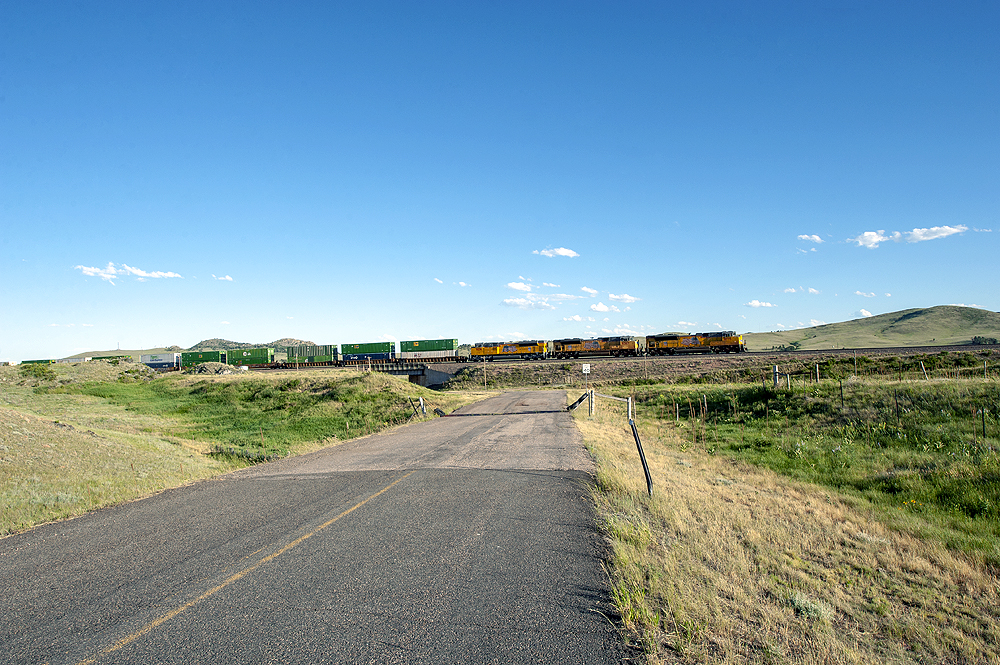
Sherman Hill: new line east from Laramie
Civil engineers located an easier grade east from Laramie and built a second main in 1901. This alignment gradually passed close to the base of the Sherman Mountains. It was about 3 miles East of Red Buttes, at a new station named Colores. This obtained the desired 0.8% grade, compared to the heavy 1.92% climb eastward from Red Buttes on the original route. The railroad stopped using helpers on eastbound trains.
Double tracking was a massive undertaking for the UP. Certain areas were favored due to operating conditions and for eliminating congestion. A second bore at Hermosa Tunnel was placed into service in 1918. This provided UP with a second main line between Omaha and Ogden, with one exception.
The Aspen Tunnel section in western Wyoming remained a single-track bottleneck. In 1947, the UP authorized construction of the adjacent 6,700-foot Altamont tunnel and additional tracks that would completely double track the main line between Council Bluffs, Iowa, and Salt Lake City, Utah. The $8 million project was placed into service in 1949.
Sherman Hill: Harriman line
After years of being satisfied with its main line across Wyoming, UP officials in 1951 revisited Sherman Hill and its difficult grades. The purpose was to seek a route that would eliminate the 1.55% maximum grade between Cheyenne and Buford and the need for helper locomotives. The only way to obtain a westward grade of 0.8 percent was to add mileage. The result was a new line that was 9 miles longer than the Buford route. The $16 million Harriman line went into service on May 24, 1953, and 50 enginemen were promptly laid off.
All lines over Sherman Hill between Cheyenne and Laramie were placed under Centralized Traffic Control in 1953. The Cheyenne train dispatcher originally controlled movements. The new Harriman Dispatch Center at Omaha replaced the Cheyenne office in 1989. The operation has flexibility so that trains can operate in any direction on all three main tracks. Today, only the short segment through the Hermosa Tunnels is double tracked over Sherman Hill; all the rest is triple tracked.
[CLICK ON MAP TO ENLARGE.]
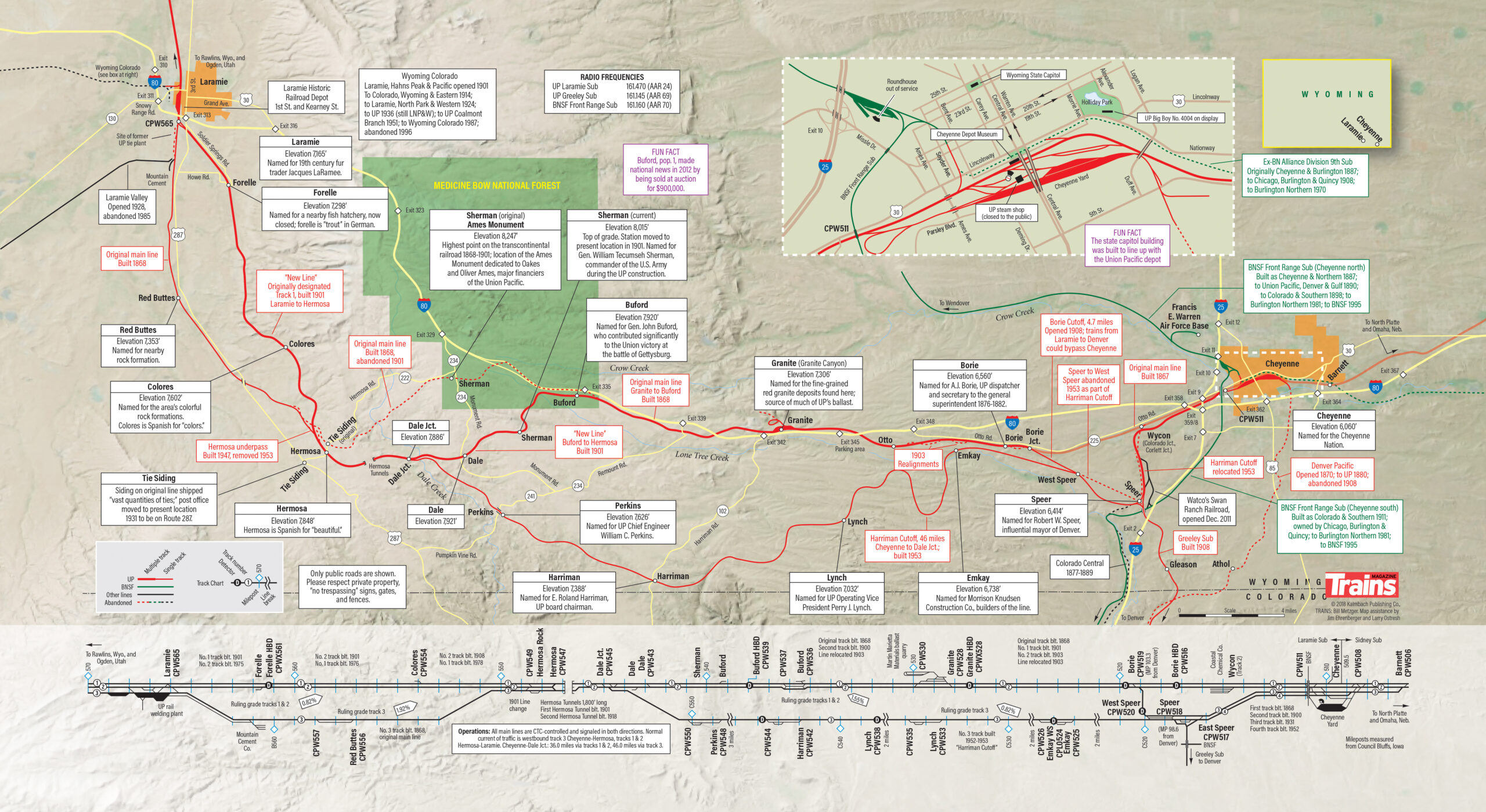






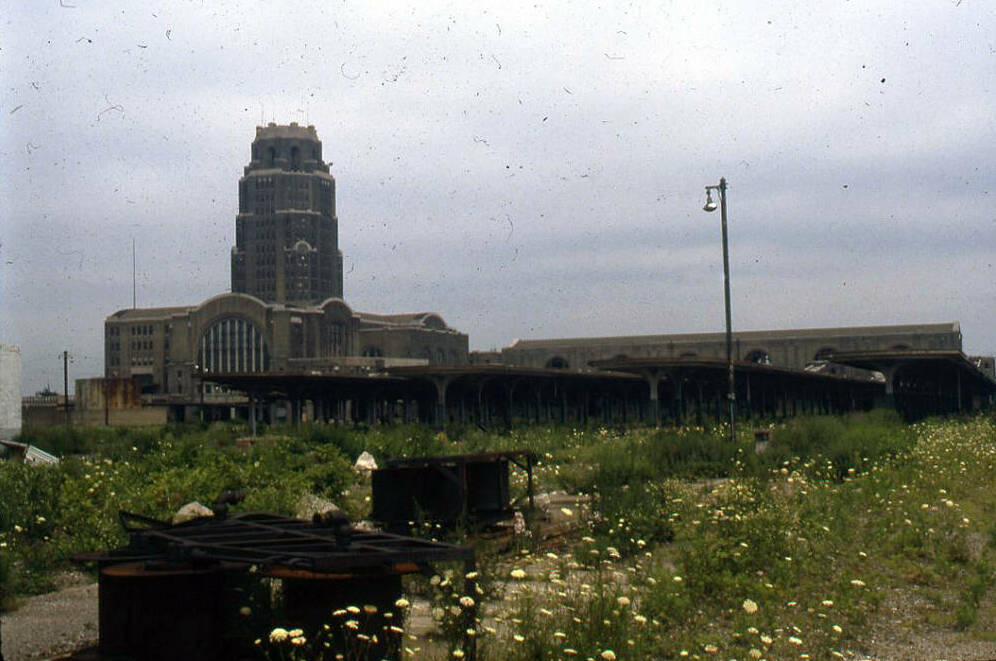
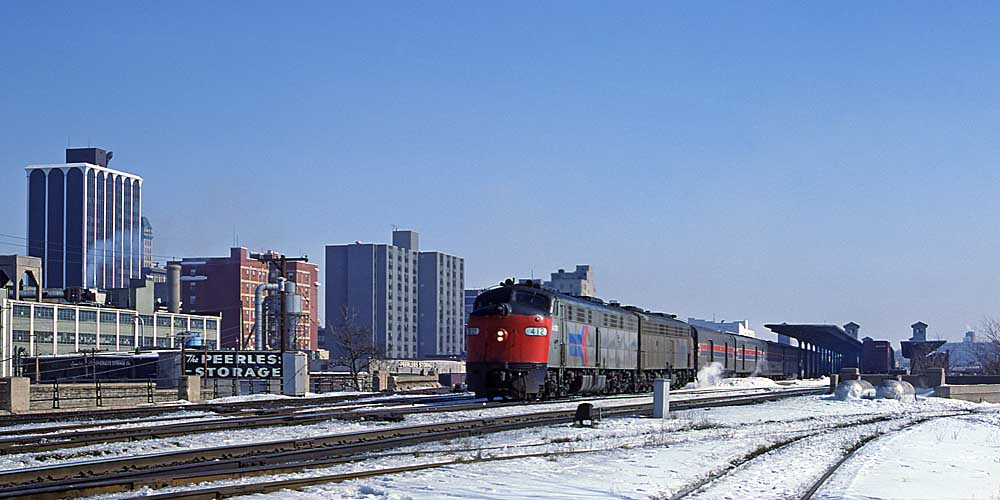
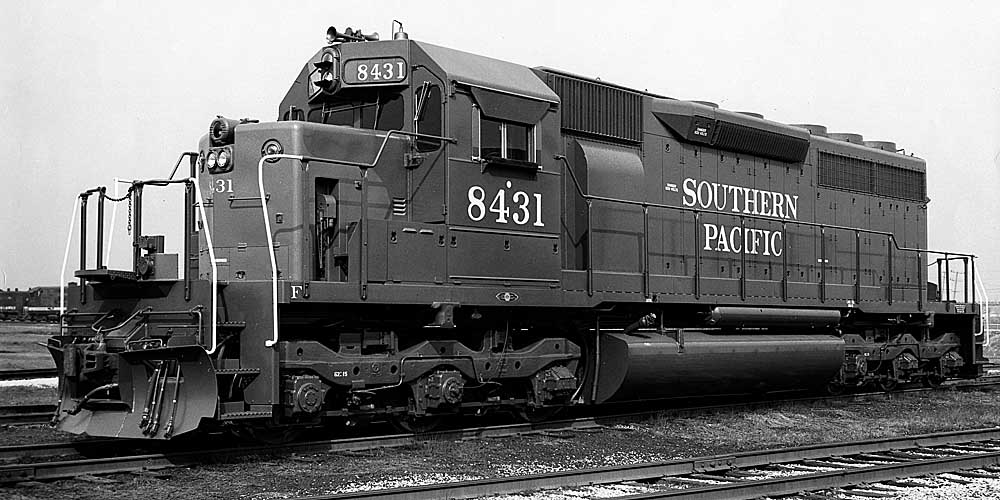
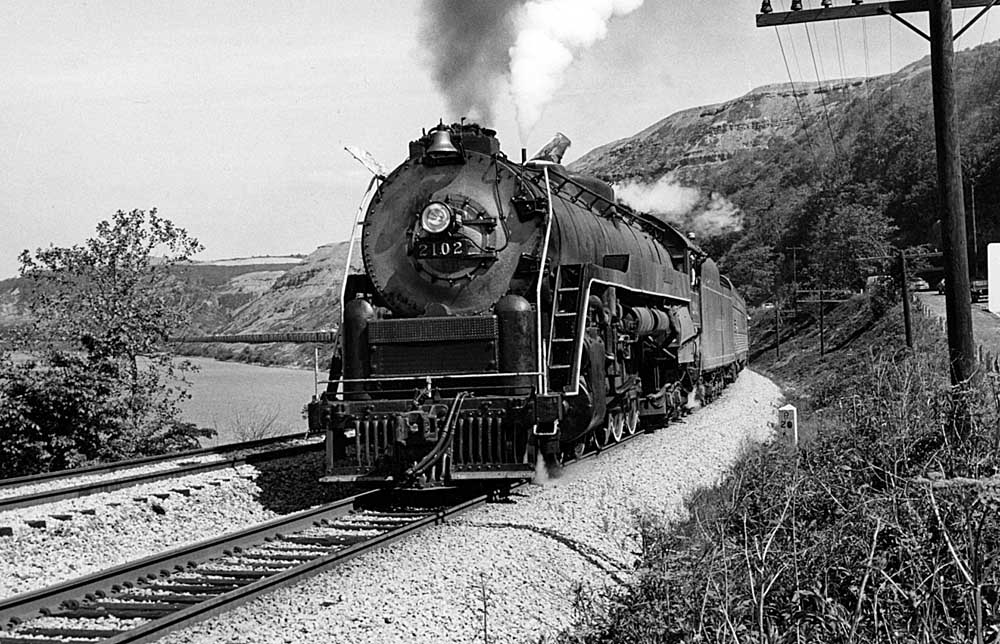




JE:
Your article led me to get some current facts:
https://www.up.com/cs/groups/public/documents/up_pdf_nativedocs/pdf_highest_elevations.pdf
I was then informed that the highest elevations in SP’s work through California were lower than the Sherman Hill pass.
You made me work and learn; thanks
I have a book entitled “How We Built The Union Pacific Railway by General Grenville Dodge, who discovered Sherman Hill. It is a minor point but General Dodge’s book indicates the hill was discovered during an encounter with Native Americans as described, but in 1865 or 1866.